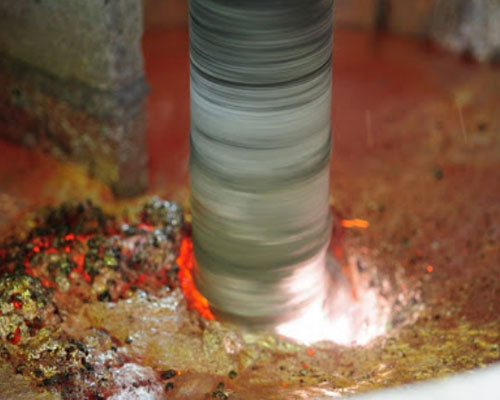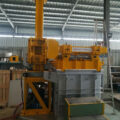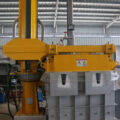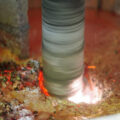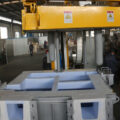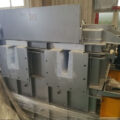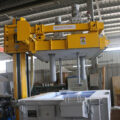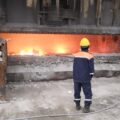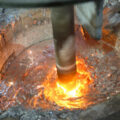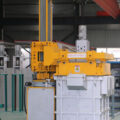Inert gas refining is to continuously blow inert bubbles into the melt, and bring the oxidized inclusions and hydrogen out of the liquid surface while the bubbles are floating. Blowing inert gas into the melt can remove slag, because the blown inert gas bubbles can absorb the oxidized inclusions in the melt and bring them out of the liquid surface during the floating process. This method is the so-called flotation deslagging method. Since the inert gas bubble adsorbs the oxidized inclusions in the melt, it can reduce the total surface free energy of the system, so this adsorption can happen automatically. The smaller the surface tension between the inert gas and the inclusions, and the greater the surface tension between the melt and the inert gas and the interface tension between the melt and the inclusions, the stronger the slag removal ability of the inert gas.
When using inert gas for refining, the refining flux should be evenly sprinkled on the liquid surface. This is because after the inert gas bubbles bring the inclusions out of the liquid surface, if there is a layer of flux on the liquid surface at this time, the inclusions will enter the flux and become slag, which is easy to pull out. Otherwise, inclusions with a larger specific gravity will fall into the molten aluminum again, and inclusions with a smaller density will form scum on the liquid surface, which is difficult to separate from the molten aluminum. When these scums are pulled out, a lot of molten metal will be brought out. Large metal loss.
Blowing inert gas into the melt can degas because there is no hydrogen in the inert gas bubble blown into the melt, and its hydrogen partial pressure is zero, and the hydrogen partial pressure in the melt near the bubble is much greater than zero, so there is a hydrogen partial pressure difference between the inside and outside of the bubble. Under the effect of this partial pressure difference, the hydrogen atoms in the melt diffuse to the bubble interface and recombine into molecules at the interface to enter the bubble. This process will not stop until the partial pressure of hydrogen inside and outside the bubble equals. The hydrogen entering the bubbles escapes into the atmosphere as the bubbles float up. In addition, during the floating process of the bubbles, the tiny molecular hydrogen bubbles suspended in the melt and the gas in the inclusions can also be brought out of the liquid surface by flotation, thereby achieving the purpose of degassing.
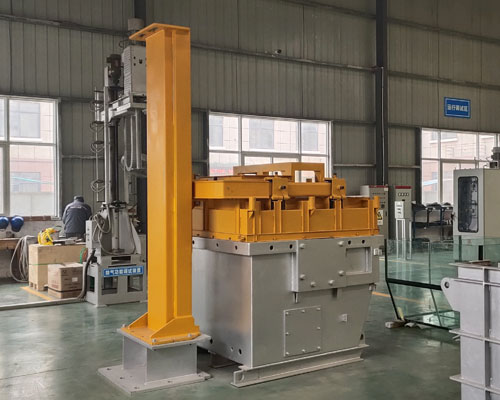
Inert Gas Refining Influential Factors
1) The nature of inert gas. The density, viscosity, wettability, and heat capacity of the inert gas have an influence on the refining effect. The greater the gas density and the greater the viscosity, the slower the floating speed in the melt and the longer the residence time, which is conducive to improving the refining effect; however, the smaller the gas density, the greater the gas volume per unit mass, and the greater the gas volume per unit mass. The larger the contact area is, it also helps to improve the refining effect. Experiments have proved that the decisive role in the degassing process is not the quality of the refined gas, but its volume and degree of dispersion in the melt. The better the wetting performance of the gas to the inclusions, the stronger the flotation ability of the gas. The heat capacity affects the refining effect by affecting the melt temperature.
2) The purity of the inert gas. The purity of the inert gas mainly refers to the degree of oxygen and moisture in the inert gas. The higher the oxygen and water content in the inert gas, the worse the refining effect. Because oxygen and water vapor enter the melt with the refined gas, they will chemically react with the melt to form an oxide film on the surface of the bubble and increase the hydrogen partial pressure in the bubble. This will not only greatly delay the diffusion and hydrogen removal process, but also And increase the content of oxidized inclusions in the solution. When the moisture and oxygen in the inert gas exceed a certain value, not only can it not play a refining role, but even cause the melt to undergo a hydrogen absorption process, causing more serious pollution.
3) The size of the bubbles. The smaller the bubble size, the better the degassing effect. Because the smaller the bubbles, the more bubbles caused by the same volume of gas, and the larger the surface area; and the slower the floating speed in the aluminum melt, the longer the contact time with the melt.
4) The uniformity of the contact between the bubbles and the melt. The fuller and more uniform the contact, the better the refining effect. Because air blowing refining is based on partial pressure difference diffusion degassing and flotation slag removal, only the area in contact with the refined gas can have a refining effect. In order to increase the chance of contact, it is best to use the combined treatment of on-line transfer refining and filtering and blowing, so that each part of the melt is subjected to refining. In the case of refining in the furnace, the refining device should be moved gently along the bottom of the furnace to prevent dead corners.
5) Other refining process parameters. Refining process parameters such as blowing time, blowing pressure, blowing temperature, and standing time of the melt after refining have obvious effects on the refining effect of the melt.

